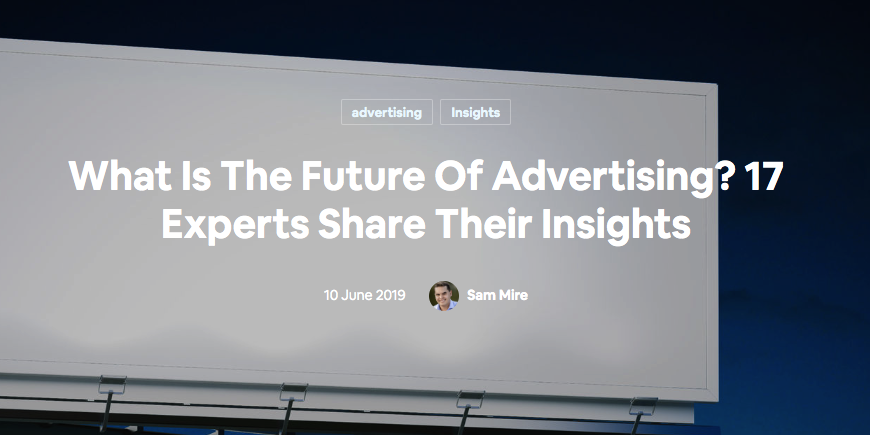
June 10-12, 2019 — By: Sam Mire, Disruptor Daily
Disruptor Daily has published a series of three blog posts diving into the latest trends and tech in advertising, featuring insight from industry experts.
Pixalate had the opportunity to contribute to each piece. Below are some of the key takeaways.
Pixalate's take: “The future of advertising is one in which advertisers aren’t forced to use drastically different solutions for all of the different channels consumers use today, such as desktop, mobile, mobile app, and internet-enabled TV.
"We’re getting closer and closer to this 'future' becoming reality, but there are still many new standards that need to be developed and adopted, especially in newer channels such as Connected TV (CTV) and over-the-top (OTT) advertising.”
Read the full article on the future of advertising here.
Pixalate's take: “The area undergoing the most experimentation, advancement, and education in 2019 is Connected TV (CTV) and over-the-top (OTT) advertising.
"The digital advertising industry’s governing bodies — such as the Interactive Advertising Bureau (IAB) and Media Rating Council (MRC) — are actively working on new standards to help advertisers more easily incorporate OTT/CTV advertising into their existing data-driven campaigns.”
Read the full article on the trends shaping advertising in 2019 here.
Pixalate's take: "We believe advancements in ad fraud detection and prevention technology will have the biggest impact on the advertising industry. New Juniper Research estimates show that advertisers will lose $42 billion to ad fraud in 2019, rising to $100 billion in 2023.
"If ad fraud solutions don’t rise to meet that challenge, especially in emerging areas of digital advertising such as Connected TV (CTV) and over-the-top (OTT), then advertisers’ trust in the digital ad ecosystem will deteriorate. Some of the biggest advertisers are already beginning to question if it’s worth spending so much on digital advertising if fraudsters are pocketing a double-digit percentage.”
Read the full article on which tech will have the greatest impact in the ad industry in 2019.
*By entering your email address and clicking Subscribe, you are agreeing to our Terms of Use and Privacy Policy.
These Stories on Thought Leadership
*By entering your email address and clicking Subscribe, you are agreeing to our Terms of Use and Privacy Policy.

Disclaimer: The content of this page reflects Pixalate’s opinions with respect to the factors that Pixalate believes can be useful to the digital media industry. Any proprietary data shared is grounded in Pixalate’s proprietary technology and analytics, which Pixalate is continuously evaluating and updating. Any references to outside sources should not be construed as endorsements. Pixalate’s opinions are just that - opinion, not facts or guarantees.
Per the MRC, “'Fraud' is not intended to represent fraud as defined in various laws, statutes and ordinances or as conventionally used in U.S. Court or other legal proceedings, but rather a custom definition strictly for advertising measurement purposes. Also per the MRC, “‘Invalid Traffic’ is defined generally as traffic that does not meet certain ad serving quality or completeness criteria, or otherwise does not represent legitimate ad traffic that should be included in measurement counts. Among the reasons why ad traffic may be deemed invalid is it is a result of non-human traffic (spiders, bots, etc.), or activity designed to produce fraudulent traffic.”

